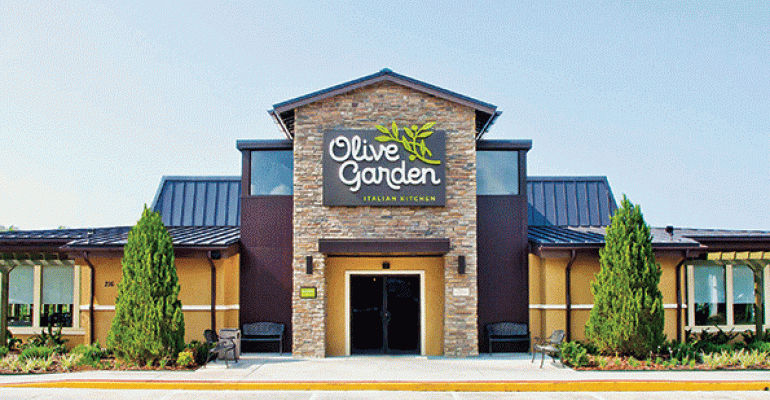Olive Garden’s same-store sales surged in May. It can thank moms for that.
The Italian casual-dining chain’s same-store sales rose 1.6 percent in the fourth quarter ended May 29, parent company Darden Restaurants Inc. said Thursday, including 4.1-percent growth in May, when the brand easily outperformed the casual-dining segment.
A big reason for this was Mother’s Day.
“We had the best Mother’s Day in Olive Garden history,” Darden CEO Gene Lee said during a fourth-quarter earnings call Thursday. “That further demonstrates our brand’s relevance and broad appeal for families celebrating time together.”
All seven Darden brands reported same-store sales growth in the quarter, including 0.9 percent at Eddie V’s, 1.1 percent at LongHorn Steakhouse, 1.4 percent at Yard House, 1.5 percent at The Capital Grille, 3.7 percent at Seasons 52, and 5.4 percent at Bahama Breeze.
All told, the brands’ same-store sales in the quarter rose 1.7 percent.
That was lower than Wall Street expected for the Orlando, Fla.-based casual-dining giant, and short of the 2.5-percent growth investors expected. In addition, the company’s prognostications for its earnings per share in the 2017 fiscal year, $3.80 to $3.90, fell short of expectations. As a result, Darden’s stock fell 4 percent in Thursday morning trading.
Lee said that the company gave guidance for a long period of time, and that still represents “significant outperformance” over casual dining.
“We believe that is appropriate guidance,” he said.
“Each of our brands significantly outperformed the industry benchmark,” Lee said, referring to the monthly Knapp-Track monthly casual-dining same-store sales tracker. “Our strategy continues to deliver results.”
Darden revenue fell 4.7 percent, to $1.8 billion, from $1.9 billion the previous year, due largely to one fewer week in the quarter. For the year, revenue rose 2.5 percent, to $6.9 billion, from $6.8 billion the previous year, despite one fewer week in the latest fiscal year.
Net income for the quarter rose 33 percent, to $139.6 million, or $1.10 per share, from $105.3 million, or 83 cents per share, in the same quarter a year before.
Mother’s Day was strong for Olive Garden in part due to the company’s efforts around the day.
“We focused a lot on Mother’s Day, in and around Mother’s Day,” Lee said.
But that wasn’t the only reason for Olive Garden’s same-store sales growth. The company said that its Italian Pot Pies, Mediterranean Fresh menu and Lasagna Lover promotion succeeded in the quarter.
So did to-go orders, which have risen 19 percent this year, and 40 percent on a two-year basis. To-go orders now represent 10.8 percent of total sales at the chain.
Twenty percent of those to-go orders are coming online, where customers are ordering more per check.
“That’s a big point of focus for us,” Lee said. “We get a higher check. And it’s operationally easier when we get people to order online.”
Food and beverage costs were 28.9 percent of sales, falling 130 basis points from a year ago, due to lower food costs.
Labor costs, meanwhile, were flat, at 31.1 percent.
Lee said that upcoming changes in overtime rules “will have no impact on our organization.”
He suggested that wage inflation at the company is ranging from 2.5 percent to 3.5 percent, depending on where the restaurant is located. Lee said that there has “not been a major tick-up in any turnover.”
But the company has also focused on making its restaurants more efficient to control labor costs.
“We focus on simplification in all aspects of our production and manufacturing process of producing our menu items,” Lee said. “We’ve taken products off of the menu that are complex and simplified procedures to allow us to improve our productivity in the back of the house.”
While Lee suggested the labor market is tight in many areas, he doesn’t necessarily think that’s a bad thing.
“I prefer to operate in an environment where labor is tight,” he said. “I think that will lead to demand in the future.”
Lee said that the company is not changing labor in the front of the house, although Olive Garden added tabletop tablets so customers can pay their bills more quickly. He said that execution at the restaurant level remains the key element to generating sales.
“We as a team, and me especially, believe that is the key driver of winning in this business,” he said. “It’s about the interaction between the server and the guest. We’ve got to execute at the restaurant level.”
Contact Jonathan Maze at [email protected]
Follow him on Twitter: @jonathanmaze





